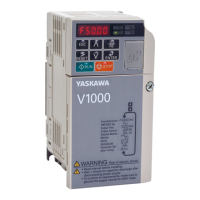e.
Finishing shape program does not need to
be repetitive monotonous increase or de-
crease in X or Z coordinate.
Notes :
1.
2.
3.
4.
When F(E) and S functions are not specified
in the block containing G73, the F (E) and
S functions specified in the preceding blocks
are effective in the pattern repeating cycle.
F (E) and S functions specified in the pro-
gram of finishing work shape are effective
in finishing cycle G 70 and ignored in pattern
repeating cycle.
Table below shows the G codes which can be
specified in the program excluding the blocks
of Nns and Nnf.
Usable G codes
Remarks
GO1, G06, G02,
—
G 03, G 22, G 23
Gil, G12
Counted as 2 blocks
Gill
Counted as 4 blocks
GI12
Counted as 5 blocks
When I and K are O or not designated, it
causes input error. (Alarm code “096” is
displayed. )
A I and A K (rough cutting allowance per
cYcle) are calculated as follows.
AI=~
K
D-l’ *K= D-1
where
D~2
Note that the control ignores the value
below 0.001 millimeter. As a rule, the
program should be made so that A I and AK
are not smaller than O. 001 millimeter.
Processing of AI and AK
EXAMPLE 1
In case of I = 0.005 mm, K = 0.005 mm,
D=7
*1 = 0.005
6
=0
1
Input error occurs.
*1 = 0.005
6
=0
(6)
EXAMPLE 2
Incase of I =0. 01 mm, K =0. 01 mm, D =7
AI = ~ =0.001mm
AK =+= 0.001mm
Therefore,
the cutting allowance of each
cycle is as follows.
1st to 6th cycle “.“
AI .AK =0.001mm
7th cycle ......
AI =LK .O.004mm
When the program has entered the tool nose
radius compensation mode before G 73 is com-
manded, the compensation is effective for
all cycles of G73.
EXAMPLE
L/
20.)
+Z
N1O G50 x260. z220. ;
N1l GOO s300 M03 T0303 ;
N12 X220. z160. ;
~ Pattern repeating
N13 G73 P14 019 U2. W1. 18. K8. D3 FO.3 S200 ;
N14 GOO x80. w-40. s400 ;
N15 GO1 w-20. FO.15
Finishingshape
N16
X120.w-lo. S300 ; program
N17 W-20, ;
N18 G22 x160. W-20. R20. S200 ;
N19 GO1 x180. w-10. ;
N20 GOO x260. z220. ;
105

